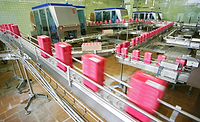FSMA
Why Documentation is Vital to FSMA Compliance
With FDA inspections underway, you’ll want to be sure your plant is following rules and regulations.

The Food Safety Modernization Act (FSMA) has many fresh-cut and produce processors examining the ways they’re handling food safety. With FDA inspections underway, you’ll want to be sure your plant is following rules and regulations.
Nearly as important as doing the right things is documenting the who, what, when and where of your food safety processes. If an FDA inspector shows up at your plant, they will ask for documentation and, if it wasn’t documented, it’s as if it never happened. Plus, if you fail to produce the right records, the FDA could shut down production.
Where to Start
The first step is to identify which of the five FSMA rules you are expected to follow:
- The Produce Rule: Applies mainly to farms handling raw agricultural commodities.
- Preventive Controls Rule for Human Food: For food production taking place outside of a farm.
- Preventive Controls Rule for Animal Food: Analogous to the human rule.
- Foreign Supplier Verification Program: For vendors of imported food products.
- Sanitary Transportation Rule: Applies to producers that ship food products.
FSMA also requires that each facility designate a Preventive Controls Qualified Individual (PCQI) who has gone through proper training to develop and oversee their food safety programs. The person in this role is ultimately responsible for outlining, managing and documenting a facility’s all-encompassing food safety plan. Smaller facilities may use an external consultant
Developing and Documenting Your Food Safety Plan
When developing a food safety plan, it is essential to examine both your products and processes. What are the food safety risks at each stage? What preventive controls are required? How will you validate and document the efficacy of those controls?
While FSMA rules do not tell you specifically what to do, or how to do it, they do spell out compliance standards. Your plant must determine the best ways to get in compliance.
There are many things to consider as you develop a food safety plan. You’ll need to include the details of your Sanitation Standard Operation Procedures (SSOP) as well as how specific preventive controls are carried out in your plant.
The various processes to outline in your plan include but are not limited to:
- Details of environmental monitoring and microbiological testing
- Standardized recall plans
- Sanitation schedules
- Detailed cleaning instructions
- Pest control management
- Control of employee traffic
- Hand sanitation protocols
- Temperature controls
The food safety plan could be in a large binder full of hard copies, or it could be an electronic file, but you must be able to produce a consolidated plan when the FDA asks for it.
After documenting the details, you must also be able to produce records proving these standards are being followed. For example, if your environmental monitoring plan calls for 15 samples a day, you should have the ability to show that 15 tests are actually being taken daily, along with your justification that shows why that is an adequate number of samples.
Working towards FSMA compliance can seem overwhelming, but the stakes for failing an inspection are high. To help make documentation easier, fresh-cut and produce processors should consider sanitation automation solutions that provide reporting. Reaching out to food safety experts for consultation and guidance can also help you develop an effective plan.
For more information, visit BirkoCorp.com. Dr. Elis Owens is Birko’s director of technical services and can be reached at eowens@birkocorp.com or 303-289-1090.
Looking for a reprint of this article?
From high-res PDFs to custom plaques, order your copy today!









